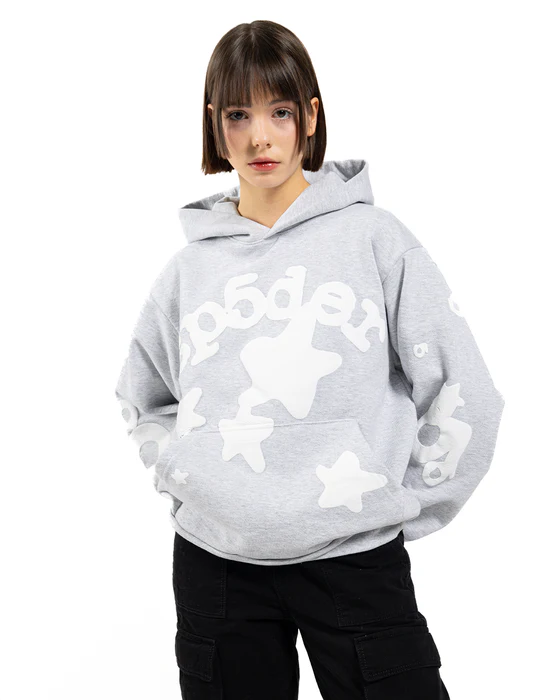Trapstar Clothing: A Streetwear Icon
Trapstar Clothing has emerged as a global streetwear phenomenon, blending bold aesthetics with a rebellious attitude. Known for its underground roots and strong cultural ties to both fashion and music, the brand has carved a niche in the fashion industry that reflects the urban lifestyle and mindset of today’s youth. Born in the gritty streets of London, Trapstar has become synonymous with street culture, creative rebellion, and self-expression.
In this deep dive, we explore the story behind Trapstar, its iconic pieces, and why it continues to influence and captivate the fashion world.
The Genesis of Trapstar: From the Underground to the Mainstream
Trapstar was founded in 2005 by three childhood friends from West London: Mikey, Lee, and Will. Unlike many other fashion brands, Trapstar’s roots were not in fashion design but in music and creative subcultures. The brand started as a DIY operation, with the founders making limited-edition t-shirts and distributing them among their close circle of friends. They were motivated by a desire to create something that felt authentic, raw, and reflective of the energy of the streets.
The name “Trapstar” is symbolic. It represents the idea of “trapping” your dreams and ambitions in a world that often tries to suppress them. The founders saw the brand as a way to escape the traditional expectations of society and create a platform for those who felt unheard. This message resonated with a generation of young people who were looking for a way to express their frustrations, ambitions, and identity through fashion.
At first, Trapstar remained an underground movement, with pieces being sold primarily through word-of-mouth and at pop-up events. But the brand quickly gained traction in London’s vibrant streetwear scene due to its raw designs, featuring bold graphics and mysterious slogans. The limited availability of their items only added to their allure, making Trapstar pieces highly sought after by fans.
Trapstar’s Unique Aesthetic: Bold, Rebellious, and Urban
Trapstar’s designs are known for their gritty, rebellious feel. The brand often uses dark color palettes, including blacks, reds, and grays, which evoke a sense of mystery and edginess. Bold graphic designs, including the iconic “It’s a Secret” slogan, are a common feature in their clothing, adding to the brand’s air of exclusivity and intrigue. The imagery and mertra fonts used in Trapstar pieces often have a cryptic or rebellious vibe, reflecting the brand’s desire to challenge the norms of both fashion and society.
One of the core elements of Trapstar’s aesthetic is its ability to blend fashion with a story. Each collection is designed to evoke a certain mood or message, whether it’s about overcoming obstacles, embracing individuality, or rejecting conformity. This storytelling aspect gives the brand depth and resonance beyond just its designs, allowing fans to feel connected to the larger message behind the clothes.
Trapstar’s most iconic items include their puffer jackets, hoodies, and t-shirts, each adorned with bold logos, cryptic messages, and powerful symbols. These pieces have become staples in the wardrobes of fashion enthusiasts, influencers, and celebrities alike.
Celebrity Endorsements and Cultural Impact
One of the key factors in Trapstar’s rise to fame is its strong connection to celebrity culture and music. The brand’s founders always had close ties to the music industry, particularly with grime, hip-hop, and rap artists in the UK. This association with the underground music scene helped Trapstar gain a loyal following among fans of the genre, many of whom embraced the brand as a representation of their lifestyle.
It wasn’t long before Trapstar artists and celebrities began wearing Trapstar. Rihanna, Jay-Z, A$AP Rocky, and Drake have all been spotted sporting Trapstar pieces, and this kind of celebrity endorsement catapulted the brand into the global spotlight. Drake, in particular, has been a notable supporter, often seen wearing Trapstar during his concerts and public appearances. His association with the brand helped it gain a following not only in the UK but also in North America and beyond.
This celebrity backing has contributed to Trapstar’s cultural significance, but the brand’s appeal goes far beyond star power. Trapstar’s ethos—rooted in rebellion, independence, and authenticity—resonates with a broad spectrum of individuals who see the brand as more than just fashion. For many, Trapstar represents a movement, a way to express their frustrations with society and assert their individuality in a world that often tries to homogenize personal expression.
The Influence of Music and Urban Culture
Music has always been a significant influence on Trapstar, and the brand’s aesthetic and ethos are deeply intertwined with the UK’s urban music scene, particularly grime and rap. These genres have long been associated with resistance and rebellion, much like Trapstar itself. Many of the artists in these scenes see the brand as a reflection of their own values, and as a result, Trapstar has become closely linked with this music movement.
The gritty, raw, and often politically charged nature of grime music mirrors Trapstar’s design philosophy. Both emphasize authenticity, and both speak to the experiences of people who feel marginalized by mainstream culture. The connection between Trapstar and grime culture has allowed the brand to remain mertra and influential in both the fashion and music industries.
As Trapstar grew, so did its collaborations with musicians and other creatives. The brand frequently collaborates with artists to produce limited-edition pieces, which are often sold out within minutes of release. These collaborations keep Trapstar’s designs fresh and innovative while further solidifying the brand’s place in the intersection of fashion and music.
Limited Releases and the Allure of Scarcity
One of the defining characteristics of Trapstar is its strategy of releasing limited-edition pieces. The brand rarely produces mass-market clothing, instead opting for small, exclusive runs that create a sense of scarcity. This approach has cultivated a “drop culture” around Trapstar, where fans eagerly await the release of new collections and often queue up for hours to get their hands on the latest pieces.
